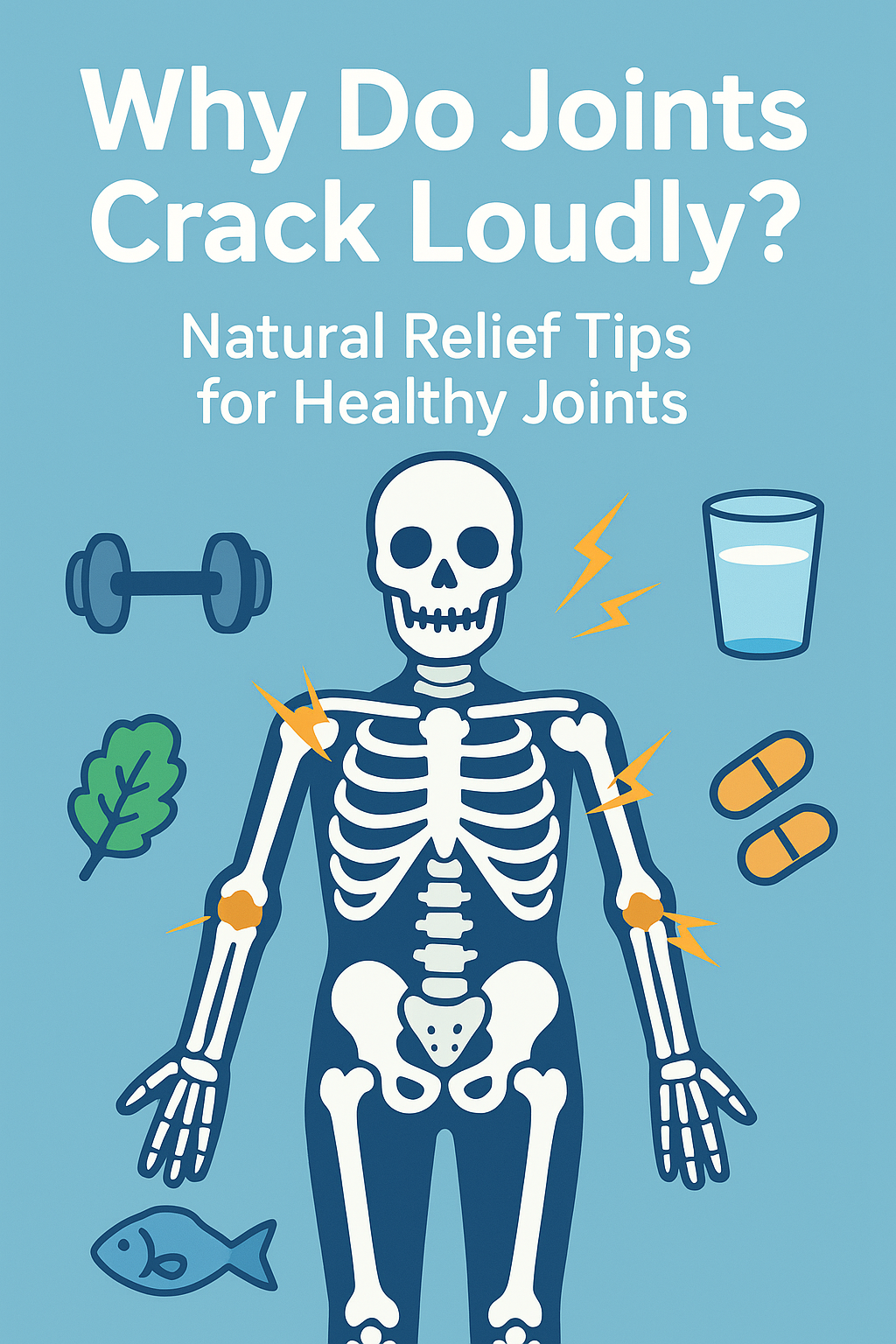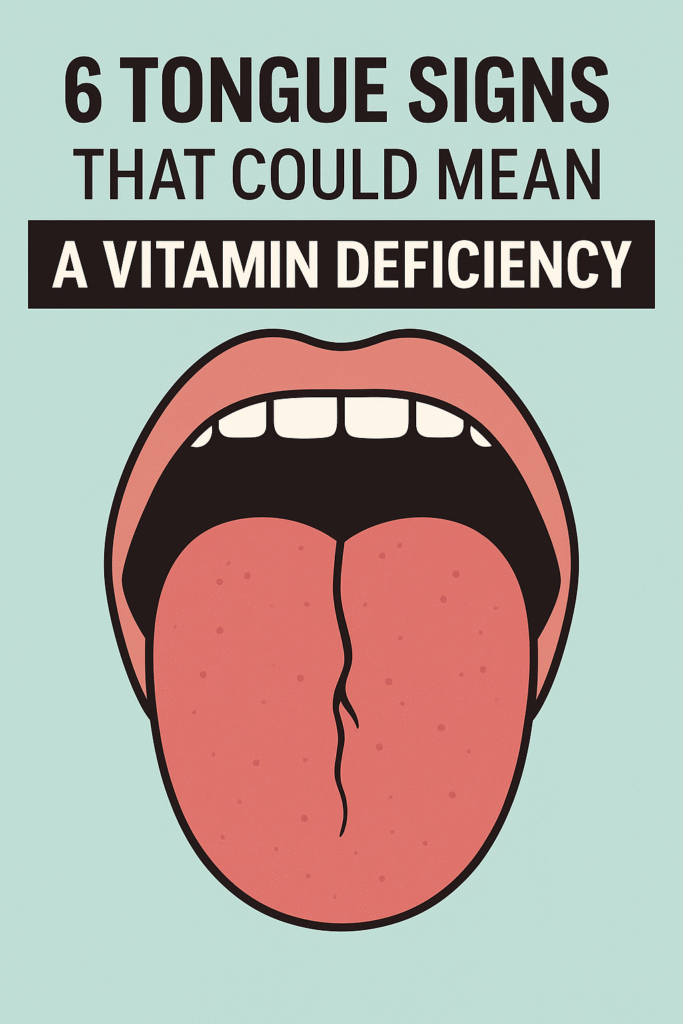
⚠️ Affiliate Disclaimer: This post may contain affiliate links, which means I may earn a small commission, at no extra cost to you, if you make a purchase through one of these links. I only recommend products or services I genuinely trust and believe can provide value. Thank you for supporting My Medical Muse!
7 Surprising Causes of Joints Cracking Loudly and How to Stop It
What Causes Joints to Crack Loudly?
Joint cracking, popping, or clicking technically known as crepitus is a common phenomenon that can occur in people of all ages. While often harmless, the sound can sometimes be unsettling, especially if it happens frequently or is accompanied by discomfort. Understanding the underlying causes of joint cracking can help you distinguish between normal joint sounds and potential warning signs of injury or disease.
1. Gas Bubbles in the Joint
The most common cause of joint cracking is the formation and collapse of gas bubbles in the synovial fluid, a process known as cavitation. Synovial fluid acts as a natural lubricant within joints, reducing friction and allowing smooth movement. When you stretch, bend, or move a joint in a certain way, the pressure inside the joint capsule changes, causing dissolved gases, mainly nitrogen and carbon dioxide to form tiny bubbles. As these bubbles collapse or burst, a distinct popping or cracking sound occurs.
This type of joint noise is generally harmless and is not linked to pain, inflammation, or long-term joint damage. People who habitually crack their knuckles or other joints are often experiencing this natural phenomenon.
2. Tendons and Ligaments Moving
Another common source of joint cracking involves tendons and ligaments snapping over bones or other tissues. Tendons connect muscles to bones, and ligaments connect bones to each other, both providing stability and support for joints. During certain movements, such as bending the knee, rotating the shoulder, or stretching the fingers, a tendon or ligament may temporarily shift position and then snap back into place, producing a clicking or popping sound.
This type of sound is typically pain-free and occurs without any structural damage to the joint. However, if accompanied by pain, swelling, or instability, it may indicate an underlying issue that warrants further evaluation.
3. Cartilage Wear and Osteoarthritis
In some cases, particularly among older adults, loud or frequent joint noises may be a result of cartilage wear. Cartilage is the smooth, rubbery tissue that covers the ends of bones in a joint, allowing bones to glide effortlessly over each other. Over time or due to injury or overuse this cartilage can become worn or rough, leading to grinding, crunching, or popping sounds during movement.
This type of joint cracking may be an early sign of osteoarthritis, a degenerative joint condition. Additional symptoms to watch for include:
- Pain during movement: Discomfort that worsens with activity or weight-bearing
- Stiffness: Difficulty moving the joint after periods of rest, particularly in the morning
- Swelling or inflammation: visible enlargement or tenderness around the joint
If these symptoms accompany joint cracking, it is advisable to consult a healthcare professional to assess joint health and discuss appropriate management strategies.
4. Injury or Inflammation
Joint popping can sometimes indicate injury or inflammation. Damage to ligaments, cartilage (such as a meniscus tear in the knee), or tendons can produce audible sounds during movement. Conditions like tendonitis, bursitis, or partial ligament tears may lead to cracking, snapping, or grinding noises in combination with pain, swelling, redness, or reduced mobility.
Unlike harmless joint noises, cracking associated with injury often signals that the joint is under stress or damaged. In these cases, continuing normal activity without proper care can worsen the condition. Early diagnosis and targeted treatment ranging from rest and physical therapy to, in some cases, surgical intervention are important for preserving joint function and preventing further complications.
Natural Relief and Remedies for Cracking Joints
For many people, loud joint cracking is harmless, but improving joint health through natural strategies can reduce the frequency of cracks and improve comfort. Here are evidence-based methods for natural relief:
1. Exercise and Movement
Regular movement is one of the best ways to maintain healthy joints. Appropriate exercises can strengthen muscles, stabilize joints, and reduce the stress that contributes to cracking.
Recommended exercises include:
- Low-impact aerobic exercise: Swimming, cycling, and brisk walking improve blood flow and strengthen supporting muscles without stressing the joints.
- Strength training: Focus on muscles around the knees, hips, shoulders, and spine to enhance joint support. Exercises like squats, lunges, and resistance band workouts are excellent choices.
- Stretching and flexibility: Yoga and Pilates improve joint range of motion and reduce stiffness, potentially decreasing audible cracking.
- Joint-specific mobility exercises: Gentle rotations of wrists, ankles, knees, and shoulders help maintain synovial fluid movement.
2. Weight Management
Excess body weight increases stress on weight-bearing joints such as the knees, hips, and lower back. Reducing body weight can:
- Lower mechanical stress on joints
- Reduce cartilage wear
- Decrease inflammation
A combination of a balanced diet and regular exercise is key to achieving and maintaining a healthy weight.
3. Nutrition for Joint Health
Certain nutrients are crucial for maintaining joint structure and function. Incorporating these into your diet can naturally improve joint comfort and mobility:
- Omega-3 fatty acids: Found in fatty fish, flaxseeds, and chia seeds; reduce inflammation and improve joint lubrication.
- Collagen: Found in bone broth and collagen supplements; supports cartilage integrity.
- Vitamin D and Calcium: Essential for bone health; found in dairy products, fortified foods, and sunlight exposure.
- Antioxidants: Fruits and vegetables rich in vitamins C and E help reduce oxidative stress in joint tissues.
- Magnesium: Found in nuts, seeds, and leafy greens; helps muscle relaxation and joint function.
4. Hydration
Adequate hydration is vital for synovial fluid production, which lubricates joints. Drinking enough water daily helps prevent stiffness and may reduce the loudness of joint cracks.
5. Heat and Cold Therapy
- Heat therapy: Warm compresses, hot showers, or heating pads can relax muscles and improve blood flow, making joints feel smoother.
- Cold therapy: Ice packs can reduce inflammation if a joint feels sore or swollen after activity.
6. Natural Supplements
Certain natural supplements have been studied for joint support:
- Glucosamine and Chondroitin: May support cartilage repair and reduce osteoarthritis symptoms.
- Turmeric (Curcumin): A potent anti-inflammatory that can help with joint discomfort.
- Boswellia Serrata: Known for reducing joint inflammation and improving mobility.
7. Mindful Movement and Posture
Poor posture or repetitive stress can increase joint strain and lead to loud cracking. Mindful movement strategies include:
- Maintaining proper ergonomics at work
- Avoiding prolonged static positions
- Using supportive shoes for walking or running
- Engaging core muscles during lifting or bending
8. Massage and Myofascial Release
Massage improves circulation, reduces muscle tension, and may help joints move more smoothly. Techniques include:
- Self-massage with foam rollers
- Professional massage therapy
- Trigger point therapy for tight muscles around joints
Lifestyle Changes for Joint Longevity
Beyond immediate relief, adopting joint-friendly habits can prevent long-term issues.
1. Avoid Overuse
High-impact sports or repetitive movements can stress joints. Rotate activities, use proper techniques, and allow recovery time to prevent wear and tear.
2. Sleep Well
Poor sleep impairs tissue repair and increases inflammation. Aim for 7-9 hours of quality sleep per night to support joint health.
3. Reduce Inflammation Through Diet
Chronic inflammation can worsen joint discomfort. Focus on:
- Limiting processed foods and added sugars
- Avoiding excessive red meat
- Eating more anti-inflammatory foods like berries, leafy greens, nuts, and fatty fish
4. Stress Management
High stress levels increase cortisol, which may contribute to inflammation. Practices such as meditation, deep breathing, and light yoga can support joint health.
When to Worry About Loud Joint Cracks
While most joint cracking is harmless and simply a part of normal movement, there are situations where it may signal an underlying problem. Being aware of these warning signs can help you take timely action and prevent potential joint damage.
Signs That Require Medical Attention
Painful Cracking or Popping
- If your joints crack or pop accompanied by pain, it may indicate irritation or injury to the cartilage, tendons, or ligaments. Painful popping should not be ignored, especially if it persists or worsens with activity.
Swelling, Warmth, or Redness
- Visible changes such as swelling, warmth, or redness around a joint may point to inflammation or infection. Conditions like arthritis, bursitis, or tendonitis often present with these symptoms in addition to joint noise.
Joint Locking or Instability
- A joint that locks, catches, or feels unstable during movement may suggest structural damage, such as a meniscus tear, ligament injury, or tendon dysfunction. These issues often require professional assessment to prevent further harm.
Cracks Accompanied by Decreased Range of Motion
- If joint cracking is paired with stiffness or reduced mobility, it could be a sign of cartilage degeneration, arthritis, or other joint disorders. Difficulty moving the joint normally warrants evaluation by a healthcare provider.
Persistent Symptoms That Do Not Improve with Natural Remedies
- While rest, exercise, stretching, and dietary adjustments often help with harmless joint cracking, symptoms that persist despite these measures may indicate a more serious problem that requires medical attention.
Why Early Intervention Matters
Consulting a healthcare professional at the first signs of concerning joint symptoms can:
- Prevent further joint damage
- Address underlying conditions such as arthritis, ligament tears, or tendon injuries.
- Provide guidance on appropriate treatment including physical therapy, medication, or, in rare cases, surgical intervention
- Help maintain long-term joint health and mobility.
In short, while the occasional loud crack in a joint is typically nothing to worry about, pain, swelling, instability, or persistent issues are red flags that should prompt a medical evaluation.
Specific Joints and Natural Relief Strategies
1. Knees
- Strengthening: Focus on quadriceps, hamstrings, and calves.
- Low-impact exercises: Swimming, stationary cycling.
- Supportive devices: Knee sleeves for extra stability if needed
2. Shoulders
- Mobility exercises: Shoulder rotations, wall angels.
- Strengthening: Resistance bands for rotator cuff muscles.
- Posture: Avoid slouching or hunching at desks.
3. Fingers
- Stretching: Gentle finger bends and extensions.
- Warmth: Warm water soaks or heating pads.
- Protective measures: Avoid excessive repetitive strain like typing without breaks.
4. Ankles
- Balance exercises: Standing on one foot or using a balance board.
- Strengthening: Calf raises, resistance band exercises.
- Proper footwear: Supportive shoes for daily activities.
Home Exercises to Reduce Joint Cracking
Here’s a simple routine you can do at home:
- Knee Extensions: Sit on a chair, straighten one leg, hold for 5 seconds, then switch.
- Shoulder Rolls: Roll shoulders forward and backward 10 times each
- Ankle Circles: Rotate each ankle 10 times in each direction
- Finger Flexes: Open and close your hands repeatedly to improve circulation
- Hip Bridges: Lie on your back, knees bent, lift hips to strengthen glutes and lower back.
Consistency with these exercises improves joint stability and reduces excessive cracking over time.
Natural Remedies to Soothe Painful Joints
Even if your joints crack without pain, some natural remedies can prevent future discomfort:
- Epsom salt baths: Magnesium sulfate may reduce inflammation and relax muscles
- Essential oils: Peppermint, eucalyptus, or ginger oils for gentle massage around joints
- Herbal teas: Ginger, turmeric, and green tea contain anti-inflammatory compounds
- Topical arnica: Can soothe mild joint aches.
Myths About Joint Cracking
Joint cracking is surrounded by numerous myths and misconceptions that can cause unnecessary worry. Understanding the facts can help you approach joint health more confidently.
1. Cracking your knuckles causes arthritis.
This is perhaps the most well-known myth about joint cracking. Many people believe that habitual knuckle cracking leads to arthritis later in life. However, multiple studies have shown that knuckle cracking does not increase the risk of developing osteoarthritis in the fingers or other joints.
That said, excessive force or aggressive cracking may irritate soft tissues such as ligaments, tendons, or the joint capsule and could cause temporary swelling or reduced grip strength over time. In general, occasional, gentle cracking is harmless.
2. All popping joints are unhealthy.
Not every joint pop is a sign of a problem. Many joints crack due to harmless phenomena like gas bubbles in the synovial fluid or tendons snapping over bones. Pain-free popping is generally considered normal and does not indicate underlying damage.
However, it’s important to monitor other symptoms. If joint cracking is accompanied by pain, swelling, locking, or instability, it may indicate a more serious condition such as ligament injury or early arthritis, and you should seek medical advice.
3. Supplements alone can fix joint problems.
Supplements such as glucosamine, chondroitin, collagen, or turmeric are often marketed as solutions for joint pain or degeneration. While they can be supportive and provide some benefit, they are not a cure on their own.
The most effective approach to joint health combines supplements with regular exercise, a balanced diet, proper hydration, and lifestyle adjustments. Strengthening the muscles around joints, maintaining flexibility, and reducing inflammation through nutrition are essential for long-term joint support.
4. Joint cracking always indicates aging.
While cartilage wear and joint degeneration increase with age, young, healthy individuals also experience joint popping. Harmless cracking can occur at any age, and occasional noise does not necessarily signal aging or damage.
FAQs About Cracking Joints
1. Is it normal for joints to crack loudly?
Yes, in most cases, loud joint cracking is completely normal, especially when it occurs without pain, swelling, or instability. These sounds often result from gas bubbles forming and collapsing in the joint fluid or from tendons and ligaments snapping over bones during movement. Occasional cracking does not typically indicate joint damage.
2. Can diet reduce joint cracking?
While diet may not completely stop joints from cracking, eating nutrient-rich, anti-inflammatory foods can support overall joint health and potentially reduce discomfort. Nutrients to focus on include:
- Omega-3 fatty acids (found in salmon, flaxseeds, and walnuts) to reduce inflammation
- Collagen (from bone broth or supplements) to support cartilage integrity
- Antioxidants (from berries, leafy greens, and citrus fruits) to protect joint tissues from oxidative stress.
A balanced diet combined with proper hydration helps maintain joint lubrication and may minimize excessive popping.
3. Should I see a doctor for popping joints?
Yes, you should consult a healthcare professional if joint popping is accompanied by:
- Pain or tenderness.
- Swelling or redness.
- Locking or reduced range of motion.
- Instability or weakness.
These symptoms could indicate conditions like arthritis, ligament or tendon injuries, meniscus damage, or other joint disorders. Early evaluation can help prevent further damage and guide effective treatment.
4. Can exercise worsen joint cracking?
Generally, gentle and controlled exercise strengthens joints rather than harming them. Activities that improve muscle support, flexibility, and joint mobility like walking, swimming, yoga, or resistance training, can reduce joint stress and improve stability.
However, high-impact activities, excessive repetitive movements, or improper technique may aggravate pre-existing joint conditions. Always listen to your body and modify exercises if pain occurs.
5. Are supplements effective for joint health?
Certain supplements, such as glucosamine, chondroitin, collagen, and turmeric, can provide support for joint function and reduce mild inflammation or discomfort.
It’s important to note that supplements are most effective when combined with a healthy lifestyle, including:
- Regular exercise to strengthen muscles around the joints.
- Balanced nutrition to support cartilage and bone health.
- Proper hydration for joint lubrication.
- Good posture and ergonomics to reduce mechanical stress.
Supplements are supportive not a substitute for proper care and movement.
6. Can cracking joints be a sign of aging?
Not necessarily. While cartilage wear and degenerative changes are more common with age, young, healthy individuals also experience harmless joint cracking. Occasional popping does not automatically indicate aging or damage context matters.
Conclusion
Loudly cracking joints are often a natural part of movement and usually harmless. However, persistent pain, swelling, or instability warrants attention from a healthcare provider. The good news is that natural remedies, lifestyle changes, and regular exercise can enhance joint health, reduce discomfort, and even minimize the frequency of cracks.
By incorporating strength training, flexibility exercises, proper nutrition, hydration, and mindful movement, you can maintain joint function and enjoy a pain-free, active life. Remember, prevention is always better than cure, support your joints today, and they will serve you well for years to come.
👩⚕️ Need Personalized Health Advice?
Get expert guidance tailored to your unique health concerns through MuseCare Consult. Our licensed doctors are here to help you understand your symptoms, medications, and lab results—confidentially and affordably.
👉 Book a MuseCare Consult NowRelated Blog Post You Might Like:
- 15 Best Natural Foods for Clear Skin and Acne (Backed by Science)
- Why Do My Eyes Twitch Randomly? 12 Causes & Proven Everyday Fixes
- 7 Proven Fixes for Neck Stiffness After Sleeping Wrong
- Why Does My Throat Feels Scratchy but No Cold? 12 Powerful Causes & Fixes
- 10 Proven Ways to Reduce Swelling in Ankles at the End of the Day
- Why Do I Keep Getting Canker Sores in My Mouth? 10 Powerful Fixes
- Why Do My Legs Feel Heavy at Night? 10 Powerful Natural Relief Options


